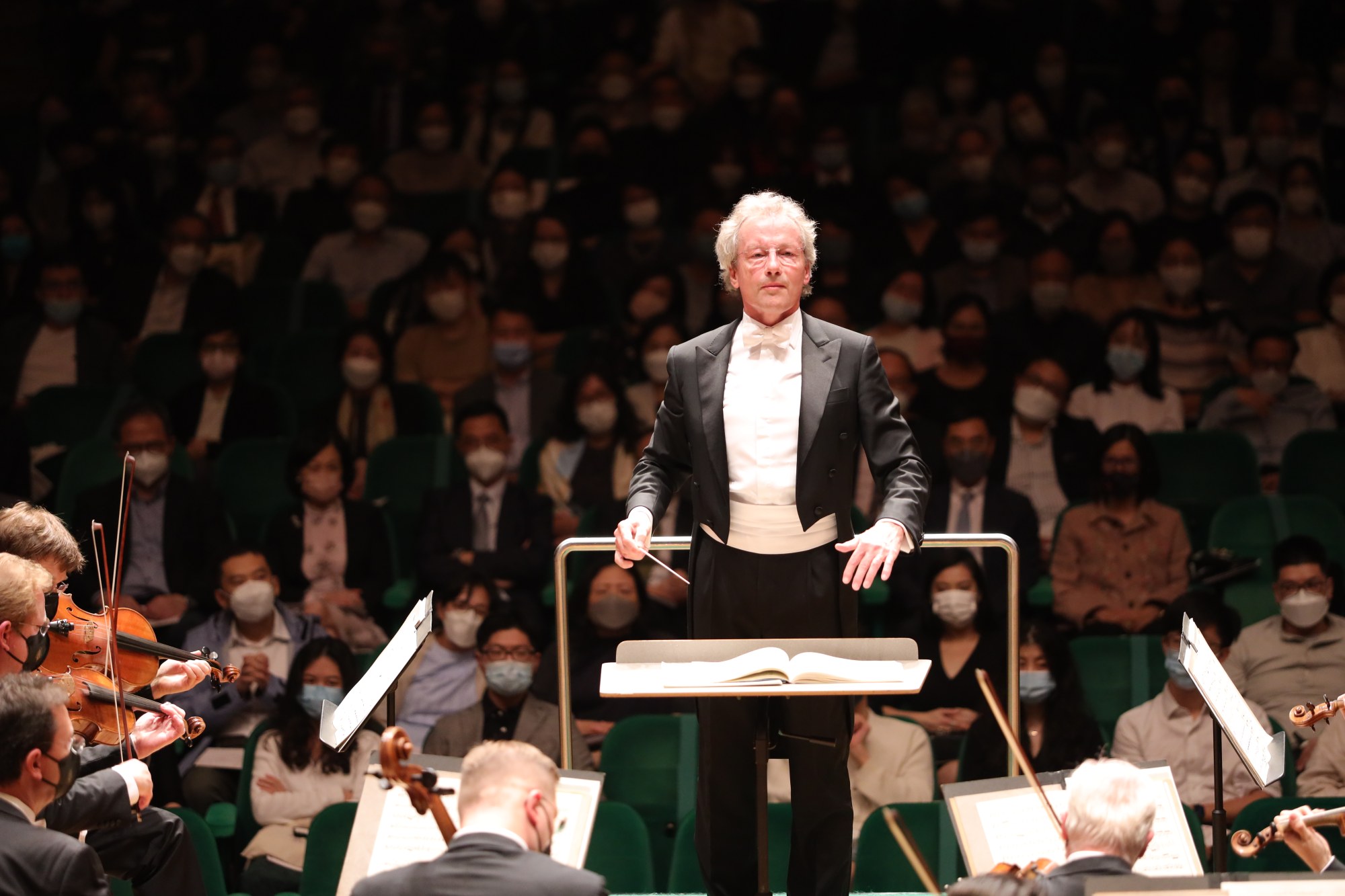
Review | In Vienna Philharmonic’s Hong Kong concerts, the orchestra’s unique sound palette and suave muscularity offered a feast for the ears
- Programmes of works by late Romantic composers allowed the orchestra to show off their elegance, refinement, cohesion and well balanced sound
- A couple of blemishes aside, the solo playing was outstanding – none more than that of concertmaster Albena Danailova
It all came down to the sound.
The unique body of orchestral sound known in German as Wiener Klangstil – or “Viennese sound style” – lured concertgoers in droves to the Vienna Philharmonic’s two Hong Kong performances, led by guest conductor and director of The Cleveland Orchestra Franz Welser-Möst.
Multiple factors contribute to the sound: particular oboes from the early 19th century, double-cylinder valve horns, goat-skinned drums and timpani, and a style of string playing that draws from a wealth of central European traditions. But ultimately it defies definition.
This week’s concerts, which kicked off the orchestra’s first Asian tour since the coronavirus pandemic began, featured music from its core Germanic and Czech repertoire – Wagner, Brahms, Dvořák and Richard Strauss.
The earnest works that began Monday’s concert meant listeners would have to wait for their dose of Viennese flair until the Dvořák that followed the intermission. Joyful exuberance was clearly off the table in Wagner’s Prelude to Parsifal and Richard Strauss’ Death and Transfiguration. These works were, however, a glorious showcase of the Vienna Philharmonic’s special sound palette.
A suave elegance in the legato string sound captivated early on in the Parsifal prelude. Introduced gently by unaccompanied violins and cellos, the motif of redemption to begin with is also Wagner’s conclusion (sung by a chorus) to Parsifal.

Woodwind and brass added refined layers of textural colour as they emerged from a highly cultivated, pulsating undercurrent of viola arpeggios.
Minimal gesture and sway from Welser-Möst sufficed as direction, and it was glorious to behold the quasi-cathedrals of sound from the brass and wind chorales that appeared like a row of solid pillars, each as perfectly proportioned as the next.
The work’s grail motif was by turns majestic and ethereal as it passed throughout the orchestral sections, but as soon as the finely contoured swells of restless string tremolo set in, one sensed that all was not well in King Arthur’s domain.
Perhaps it was the unresolved ambiguity with which Wagner’s opera opens that led Welser-Möst to segue straight into Strauss’ Death and Transfiguration – a smart and effective way to maintain the audience’s rapt attention.
Finely nuanced solo playing soon emerged from the gentle string syncopations and irregular timpani heartbeats with which Strauss’ depiction of a dreaming, sick artist begins.
The uniquely bright and earthy sound of the Viennese oboe was one, hovering above dreamlike harp arpeggios. Concertmaster Albena Danailova’s sweetly toned violin sound enchanted, and when the agitated might of the orchestra was unleashed soon afterwards in the composer’s depiction of the death struggle, the sound was vibrant, full-bodied like a fine wine, and well balanced.
This brilliant surging in Strauss’ richly orchestrated textures saw the orchestra right in their element. As the glorious brass chorales began to subside over angelic strains in the upper strings, the sense of fulfilment in death was both moving and profound.
Like a comforting hug, the cello section’s introduction to Dvořák’s Symphony No. 8 after the break was more than welcome. Sunny buoyancy was the order of the day in the first Allegro.
The smooth and seamless relaying of string pizzicato from section to section impressed, as did some highly effective pianissimo echoes of woodwind phrases in the Adagio. There was an unexpected horn blemish and another from the oboe as the movement developed.
The fabulous lilt that marked the Allegretto grazioso was a sheer delight, with silky string sound that oozed Bohemian charm. When the trumpet heralded the Allegro finale with poignant precision, the scene was well set for a great romp.
Stomping rhythms and the spectacular fluttering of horns in the explosive ending brought a fitting and triumphant conclusion to the symphony, and the orchestra’s first Hong Kong concert.

Despite the fine depth of sound in the opening chords of Johannes Brahms’ Tragic Overture, the pulsating energy the orchestra initially generated gave way occasionally. This stemmed from some unclear punctuation. Amends were made when a crisper execution of the rhythmic figure appeared wonderfully hushed in the work’s march-like central section.
More Brahms followed – his fabulous Symphony No. 3. Welser-Möst and the orchestra found excellent equilibrium in switching between its agitated and lyrical material.
The sweeping violins were homogenous in sound and gesture, and in both the Allegro and Andante, the yearning clarinet playing of Daniel Ottensamer shone, alone and in combination with bassoons.
Ebb and flow was expertly maintained in the Poco allegretto by Welser-Möst and the stormy and rugged aspects of the finale were well realised and exciting, even if the playing was not always as tightly reined and precise as expected.
Without a shadow of doubt, some of the orchestra’s finest playing came in Richard Strauss’ demanding tone poem Thus Spoke Zarathustra. The highlights were plentiful; rumbling double basses, rousing brass playing, and the wonderfully tempestuous flurries of emotion.
If one individual stole the show, it was concertmaster Danailova with her poised and brilliantly virtuosic solo violin passages – as well as her strong and unwavering leadership in both concerts.
At the end of both concerts the Vienna Philharmonic dished out the obligatory waltz and polka. These might have been a tad jarring after the glorious transcendence of the Strauss on Tuesday evening, but the encores certainly pleased the crowd.
Vienna Philharmonic Orchestra Concerts in Hong Kong. Hong Kong Cultural Centre Concert Hall. Reviewed: October 24 and 25. (Online video recordings will be available for viewing within Hong Kong free of charge at a later date.)

